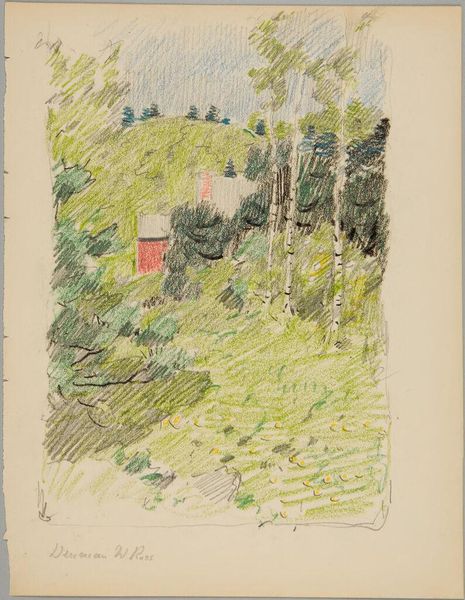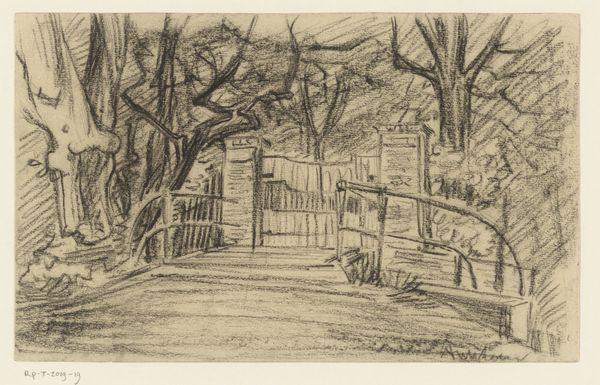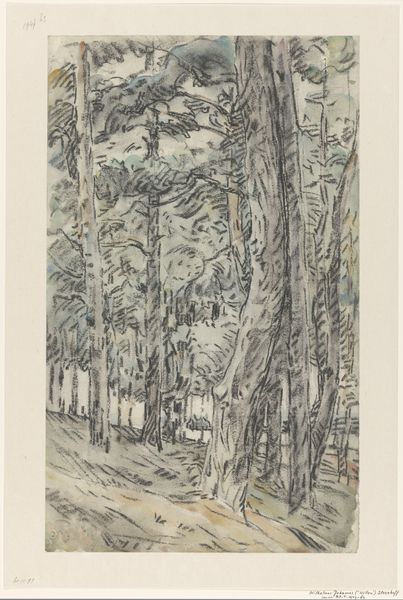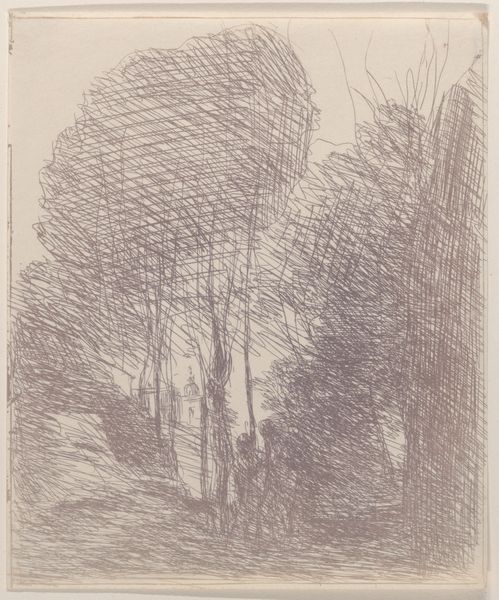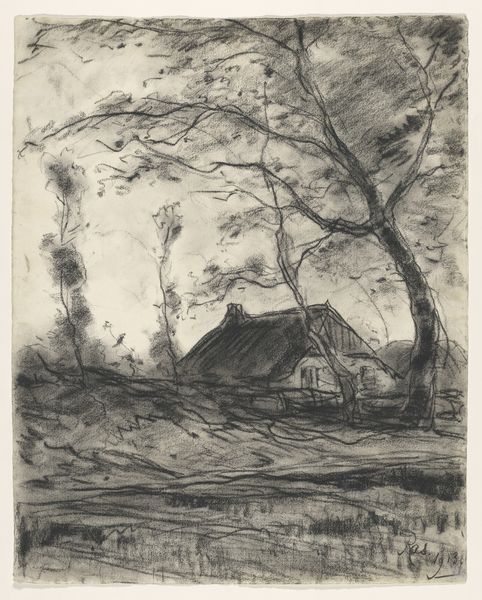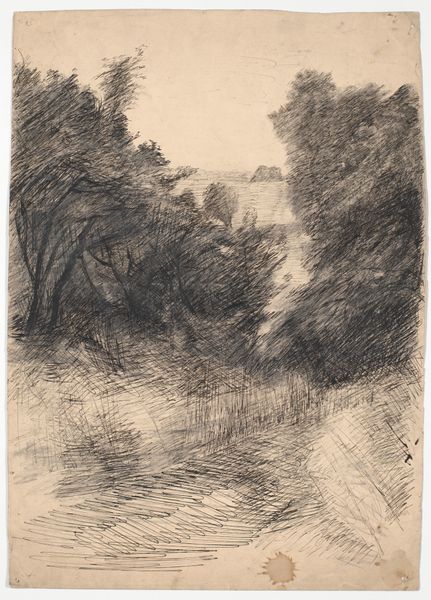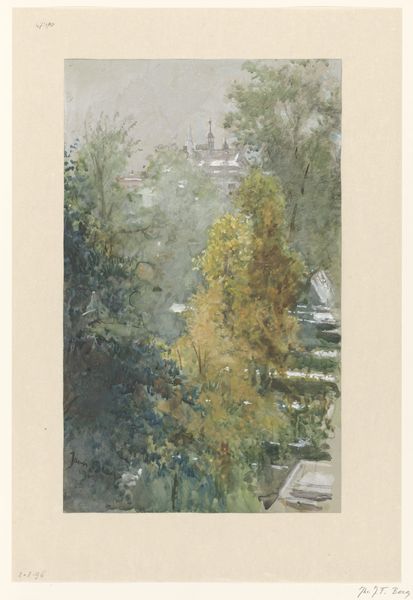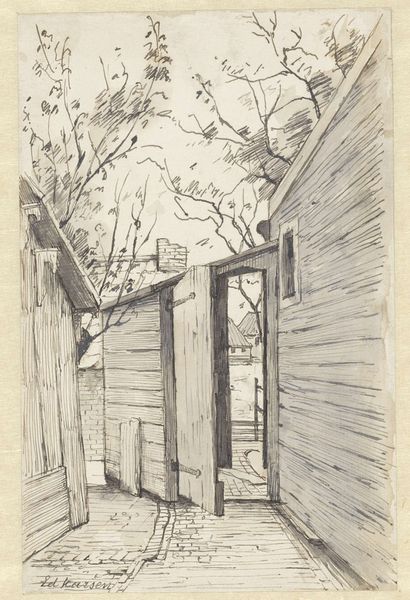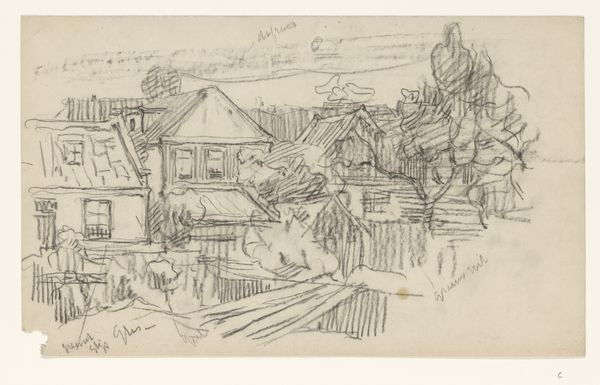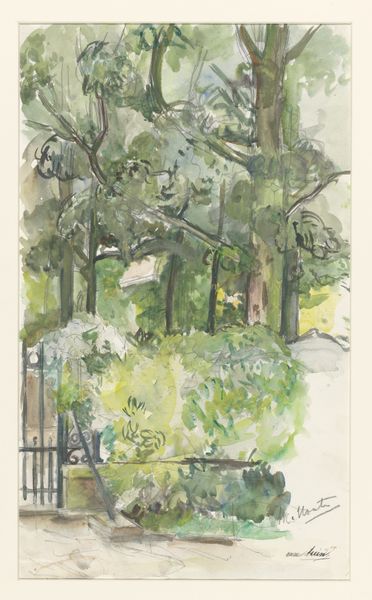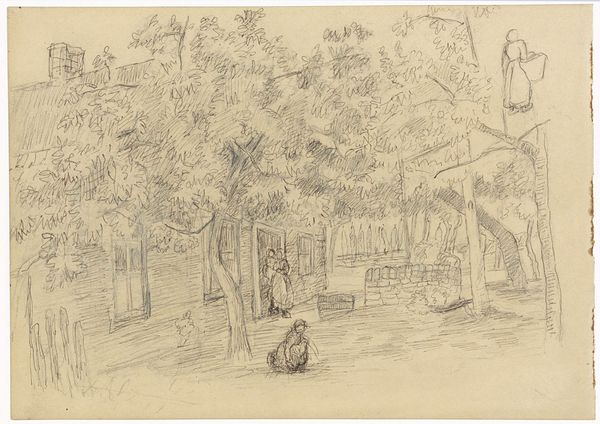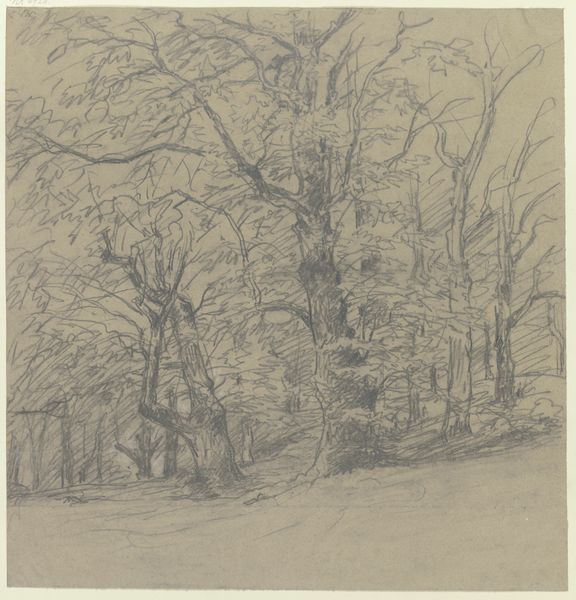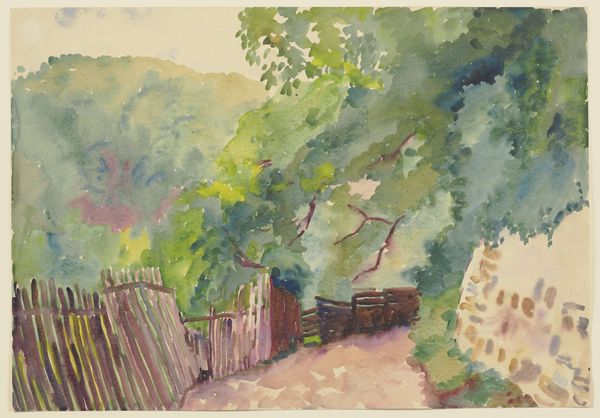
Dimensions: height 417 mm, width 356 mm
Copyright: Rijks Museum: Open Domain
Editor:"Boothuis onder bomen aan de Boerenwetering in Amsterdam," created around 1910 by Frits Hubeek. It's a watercolor and drawing, I believe. I’m struck by its hazy atmosphere; it feels like a memory. What's your take on it? Curator:Indeed. To understand Hubeek's work, especially within the context of early 20th-century Dutch art, consider the evolving role of landscape painting. How did the institutional art world of the time—the galleries, the salons, the academies—shape artists’ engagement with representing the Dutch landscape? This piece comes when Impressionism started transforming the classic views into something more personal. Does it feel personal to you? Editor:Definitely. It seems he's less interested in perfect representation and more in capturing a feeling or impression of the scene. But were those “personal” impressions accepted in public? Curator:That's a critical question. Think about how public taste and art criticism played a part. The art market wanted pretty pictures and some Impressionists started shifting their production to meet this demand. It’s visible through his medium of choice. Hubeek balances the need to sell paintings by catering to the market for watercolor landscapes, while also innovating within that space. Editor:So, his artistic choices are reflecting a dialogue, almost a negotiation, between personal expression and the demands of the art world? Curator:Precisely. And don’t forget, artistic styles also make statements within certain social environments. In which public would this landscape circulate, and what values are transmitted when one creates and promotes such images of peace? Editor:I hadn't considered the politics inherent in the "peaceful" landscape. That's a lot to think about. Curator:Indeed. Analyzing art involves unraveling the complex interplay between the artist, the artwork, and the socio-political environment in which they operate. There are always stories within the strokes, it all just needs a little context!
Comments
No comments
Be the first to comment and join the conversation on the ultimate creative platform.
